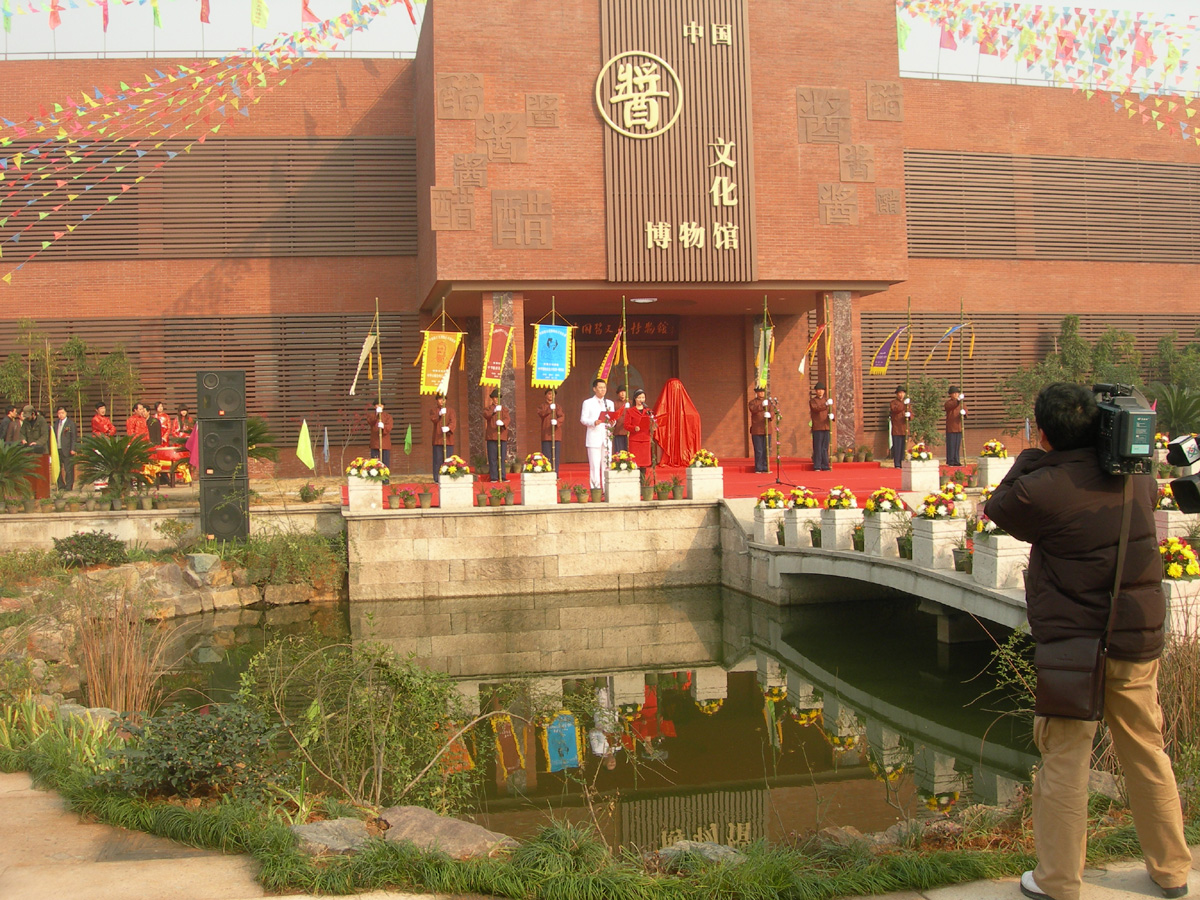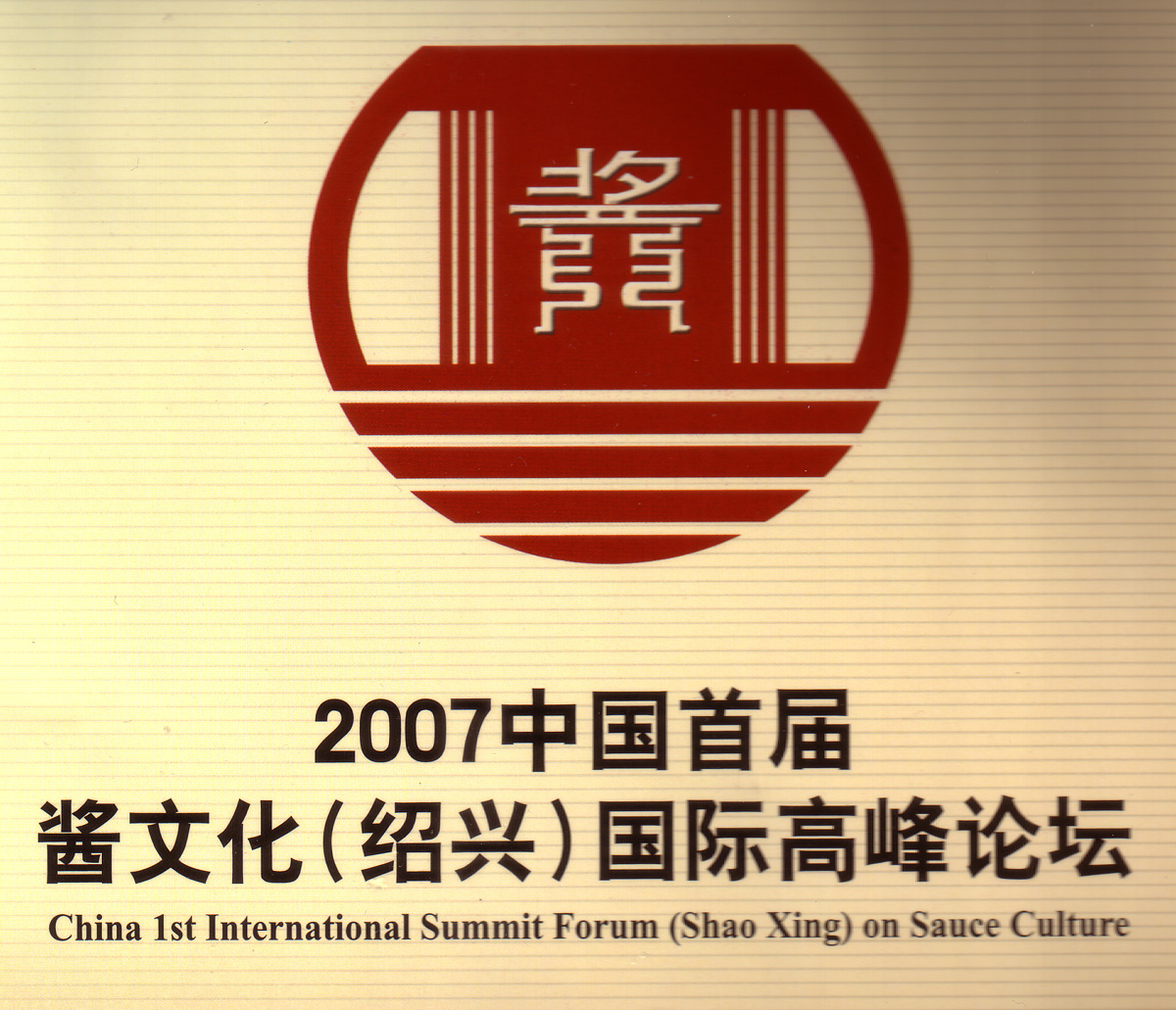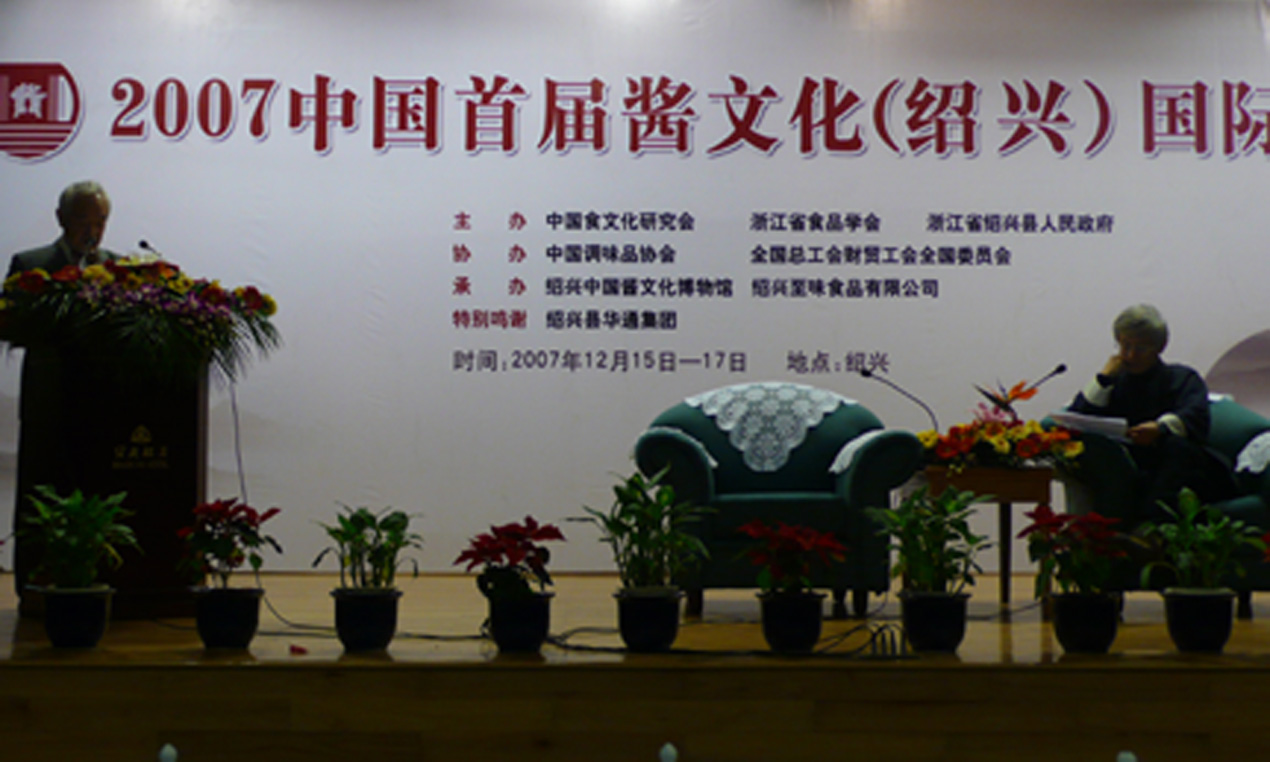|
Read 13034765 times
Connect me to:
|
Shaoxing, A Conference and The National Sauce Culture MuseumChinese Food in China, Hong Kong, and/or Taiwan
Fall Volume: 2008 Issue: 15(3) page(s): 28
The city of Shaoxing is located south of Hangzhou, which itself it south of Shanghai. A city of about five million people today, in ancient times it was lots smaller and was the capital of the Yue Kingdom (770 - 221 BCE). Today it compares with Suzhou, both cities with lots of canals, waterways, and many scenic and historic places. One famous place is the Bazi Qiao bridge. It is shaped like the number eight, and located just north of the city. Others are the Lu Xun family home, Cai Yuanpei's house, Zhou En Lai's family home, East Lake, and many others. Local cuisine here is popular, loaded with simple dishes, many river foods, lots of poultry and vegetables, and others with complicated pre-preparations of their basic ingredients. Best known is an important and popular product, Shaoxing wine, China's famous yellow wine that is beloved throughout the country. Also well-known are many types of water chestnuts from the region, preserved leaf mustard, stewed bambooo shoots, and dried vegetables. Likewise local streaky pork, sweet and sour dishes such as shrimp exploded in oil, and dishes with strong preserved bean curd including Ke Bridge Bean Curd. This particular smelly variety is made with cassia bark, anise, fennel seeds, cloves, and yellow wine, to name just a few of the ingredients cooked on very low heat for at least twelve hours.  The NATIONAL SAUCE CULTURE MUSEUM, is new and located in the riverside of Ruoye Brook in historic Shaoxing County, Zhejiang province. It was dedicated at the 2007 China 1st Sauce Culture International Forum, specifically on December 14th, 2007. The opening ceremony, led by Professor Zhao Rongguang, a director of the Research Institute of Chinese Dietary Culture and initiator and designer of this magnificent museum invited this magazine's editor to give a plenary lecture at that very conference. She witnessed and took part in the museum's opening along with more than two hundred fifty conference participants and hundreds of others. This historic day, we were welcomed to the building with classic Chinese dances including lion dances, the requisite fire crackers to scare off any evil spirits, much music, and much more. The NATIONAL SAUCE CULTURE MUSEUM, is new and located in the riverside of Ruoye Brook in historic Shaoxing County, Zhejiang province. It was dedicated at the 2007 China 1st Sauce Culture International Forum, specifically on December 14th, 2007. The opening ceremony, led by Professor Zhao Rongguang, a director of the Research Institute of Chinese Dietary Culture and initiator and designer of this magnificent museum invited this magazine's editor to give a plenary lecture at that very conference. She witnessed and took part in the museum's opening along with more than two hundred fifty conference participants and hundreds of others. This historic day, we were welcomed to the building with classic Chinese dances including lion dances, the requisite fire crackers to scare off any evil spirits, much music, and much more.
 At the conference, speakers talked about sauce culture worldwide, and at the museum saw exhibits of ancient and modern Chinese sauces, soy sauces, vinegars, and sauce urn culture. On the way home, they stopped at a Shaoxing wine factory and museum and tasted and viewed specifics to that local fantastic fermented product. At the conference, speakers talked about sauce culture worldwide, and at the museum saw exhibits of ancient and modern Chinese sauces, soy sauces, vinegars, and sauce urn culture. On the way home, they stopped at a Shaoxing wine factory and museum and tasted and viewed specifics to that local fantastic fermented product.
 The talks and the museum were about sauce culture development at home and abroad and were featured at both conference and museum. Both were fascinating. Established by the Shaoxing Zhi Wei Foods Co., Ltd. with direction from Professor Zhao Rongguang, a scholar at Zhejiang University, this magnificent museum was put together with input from other academic and museum experts and others from the Research Institute of Chinese Dietary Culture. It showcases Chinese and other sauce culture histories and their current developments worldwide, as well. When in the area, do not miss this modern two-story master of a museum. The talks and the museum were about sauce culture development at home and abroad and were featured at both conference and museum. Both were fascinating. Established by the Shaoxing Zhi Wei Foods Co., Ltd. with direction from Professor Zhao Rongguang, a scholar at Zhejiang University, this magnificent museum was put together with input from other academic and museum experts and others from the Research Institute of Chinese Dietary Culture. It showcases Chinese and other sauce culture histories and their current developments worldwide, as well. When in the area, do not miss this modern two-story master of a museum.
Sauce culture in Shaoxing is known for three different and famous urn types, one each for wine, sauce, and dyes, and it is known for its many wines and sauces. With the support of the local tourism department and political and professional folk, this museum now makes Shaoxing a destination city for all who travel to Eastern China. On both floors, the museum showcases sauce history beginning with the first person known in the sauce industry, Cai Yung (133 - 192 CE). His statue graces the entrance as does a wall telling about sauce culture in China. These and the museum tell, in Chinese and English, how soy sauces were taken to Japan by Monk Jianzhen in 755 CE, and lots more. With many dioramas; all life-size, detailed, and with bilingual descriptions, it is fascinating information about sauces worldwide. For the opening, a statue of Ping Hui took center stage, but afterwards, it was moved so as not to obstruct people’s entry. Among the first to enter, we signed the book with many luminaries who helped inaugurate the museum. We were as excited as any to see it outside and in. Note the color of the exterior, one of the many features of soy sauce. Also look carefully at the Ming Dynasty sauce garden; it alludes to the museum's contents of soy sauce, soy pickles, alcohol, vinegar, and other fermented foods. For those who can not get there soon, visit from the comfort of your home at www.zgjb.com.cn There is much to learn from the museum and its website; enjoy them both!
|

 The NATIONAL SAUCE CULTURE MUSEUM, is new and located in the riverside of Ruoye Brook in historic Shaoxing County, Zhejiang province. It was dedicated at the 2007 China 1st Sauce Culture International Forum, specifically on December 14th, 2007. The opening ceremony, led by Professor Zhao Rongguang, a director of the Research Institute of Chinese Dietary Culture and initiator and designer of this magnificent museum invited this magazine's editor to give a plenary lecture at that very conference. She witnessed and took part in the museum's opening along with more than two hundred fifty conference participants and hundreds of others. This historic day, we were welcomed to the building with classic Chinese dances including lion dances, the requisite fire crackers to scare off any evil spirits, much music, and much more.
The NATIONAL SAUCE CULTURE MUSEUM, is new and located in the riverside of Ruoye Brook in historic Shaoxing County, Zhejiang province. It was dedicated at the 2007 China 1st Sauce Culture International Forum, specifically on December 14th, 2007. The opening ceremony, led by Professor Zhao Rongguang, a director of the Research Institute of Chinese Dietary Culture and initiator and designer of this magnificent museum invited this magazine's editor to give a plenary lecture at that very conference. She witnessed and took part in the museum's opening along with more than two hundred fifty conference participants and hundreds of others. This historic day, we were welcomed to the building with classic Chinese dances including lion dances, the requisite fire crackers to scare off any evil spirits, much music, and much more.  At the conference, speakers talked about sauce culture worldwide, and at the museum saw exhibits of ancient and modern Chinese sauces, soy sauces, vinegars, and sauce urn culture. On the way home, they stopped at a Shaoxing wine factory and museum and tasted and viewed specifics to that local fantastic fermented product.
At the conference, speakers talked about sauce culture worldwide, and at the museum saw exhibits of ancient and modern Chinese sauces, soy sauces, vinegars, and sauce urn culture. On the way home, they stopped at a Shaoxing wine factory and museum and tasted and viewed specifics to that local fantastic fermented product.  The talks and the museum were about sauce culture development at home and abroad and were featured at both conference and museum. Both were fascinating. Established by the Shaoxing Zhi Wei Foods Co., Ltd. with direction from Professor Zhao Rongguang, a scholar at Zhejiang University, this magnificent museum was put together with input from other academic and museum experts and others from the Research Institute of Chinese Dietary Culture. It showcases Chinese and other sauce culture histories and their current developments worldwide, as well. When in the area, do not miss this modern two-story master of a museum.
The talks and the museum were about sauce culture development at home and abroad and were featured at both conference and museum. Both were fascinating. Established by the Shaoxing Zhi Wei Foods Co., Ltd. with direction from Professor Zhao Rongguang, a scholar at Zhejiang University, this magnificent museum was put together with input from other academic and museum experts and others from the Research Institute of Chinese Dietary Culture. It showcases Chinese and other sauce culture histories and their current developments worldwide, as well. When in the area, do not miss this modern two-story master of a museum.